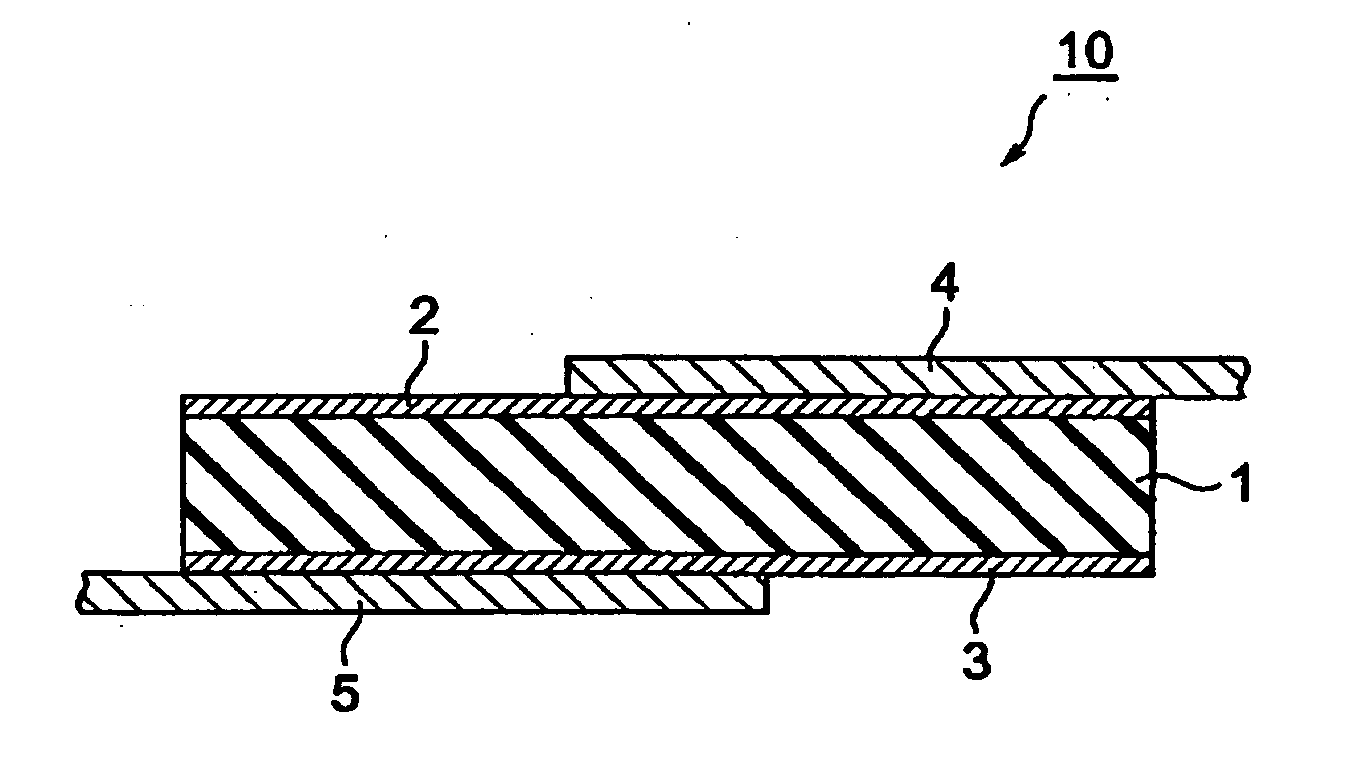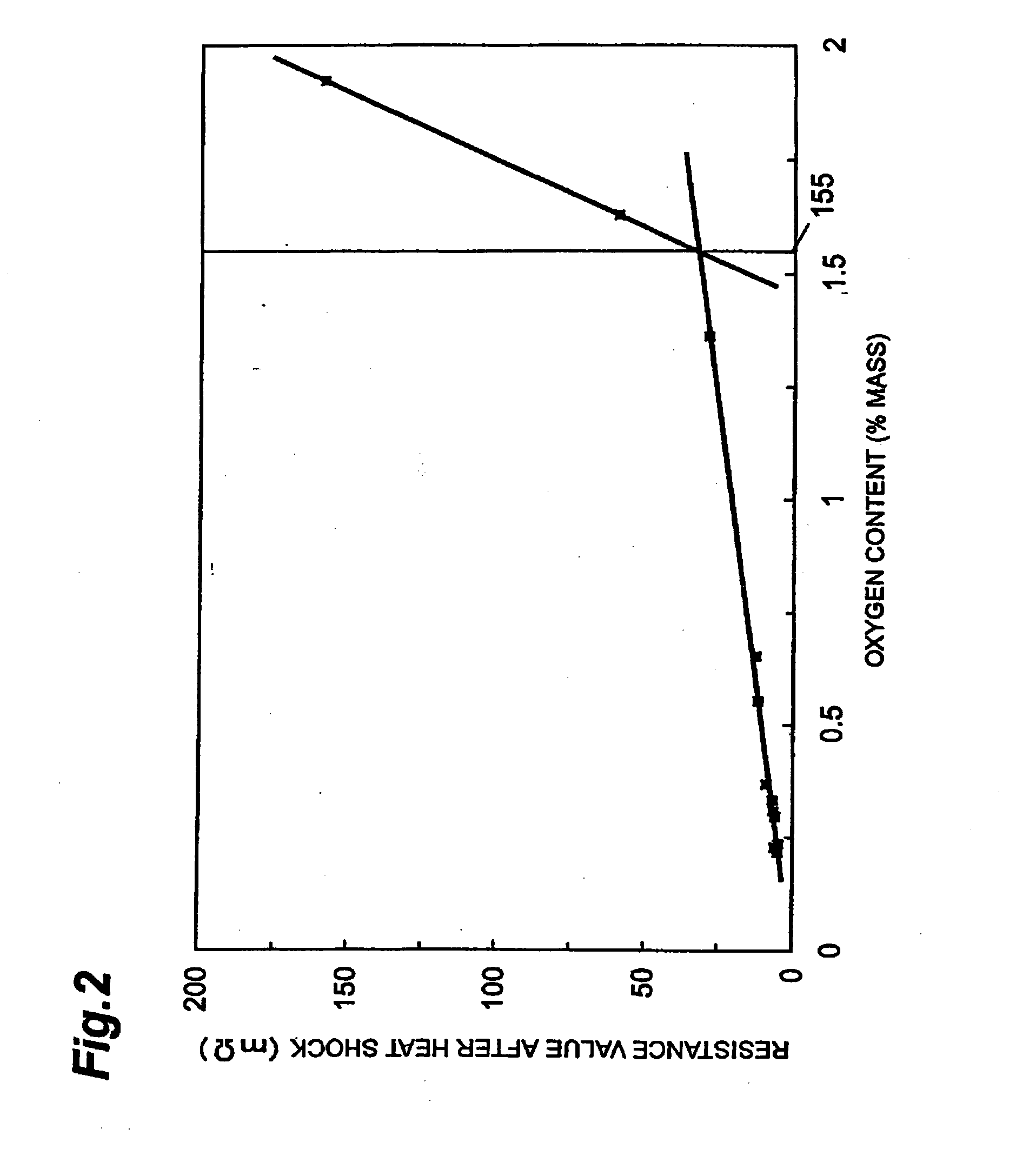Organic positive temperature coefficient thermistor and manufacturing method therefor
- Summary
- Abstract
- Description
- Claims
- Application Information
AI Technical Summary
Benefits of technology
Problems solved by technology
Method used
Image
Examples
example 1
57% by volume of straight chain low density polyethylene manufactured using a metallocene catalyst as the polymer matrix (Evolu2520, Mitsui Chemical, tradename), 35% by volume of filamentous particles made of nickel as the conductive particles (Type 210, INCO, trade name) and 8% by volume of polyethylene wax as the low molecular weight organic compound (PW655, Baker Petrolite, trade name) were placed in a Laboplast mill (Toyo Seiki, trade name). The mill had a chamber capacity of 60 cm3, while the total volume of the materials used was 45 cm3 when converted to true density.
Next, the interior of the kneading chamber of the mill was decompressed to about 6.7 kPa (about 50 Torr) using a vacuum / purge unit (Toyo Seiki), after which the chamber was sealed.
Next, heating and kneading was performed for 60 minutes at a temperature of 150° C. to obtain a kneaded product.
After completion of kneading, the resulting kneaded product was sandwiched between nickel foils (electrodes) having a ...
example 2
A P-PTC thermistor was prepared as in Example 1 except that instead of the kneading chamber of the mill being sealed after being decompressed to about 6.7 kPa (about 50 Torr) using a vacuum / purge unit, the kneading chamber of the mill was first decompressed to about 6.7 kPa (about 50 Torr) using a vacuum / purge unit, and then nitrogen was introduced until the pressure inside the chamber reached atmospheric pressure and the chamber was sealed. The results for oxygen content of the thermistor element and resistances are shown in Table 1.
example 3
A P-PTC thermistor was prepared as in Example 1 except that instead of the kneading chamber of the mill being sealed after being decompressed to about 6.7 kPa (about 50 Torr) using a vacuum / purge unit, the kneading chamber of the mill was first decompressed to about 6.7 kPa (about 50 Torr) using a vacuum / purge unit, and then argon gas was introduced until the pressure inside the chamber reached atmospheric pressure and the chamber was sealed. The results for oxygen content of the thermistor element and resistances are shown in Table 1.
PUM
 Login to View More
Login to View More Abstract
Description
Claims
Application Information
 Login to View More
Login to View More - R&D
- Intellectual Property
- Life Sciences
- Materials
- Tech Scout
- Unparalleled Data Quality
- Higher Quality Content
- 60% Fewer Hallucinations
Browse by: Latest US Patents, China's latest patents, Technical Efficacy Thesaurus, Application Domain, Technology Topic, Popular Technical Reports.
© 2025 PatSnap. All rights reserved.Legal|Privacy policy|Modern Slavery Act Transparency Statement|Sitemap|About US| Contact US: help@patsnap.com



